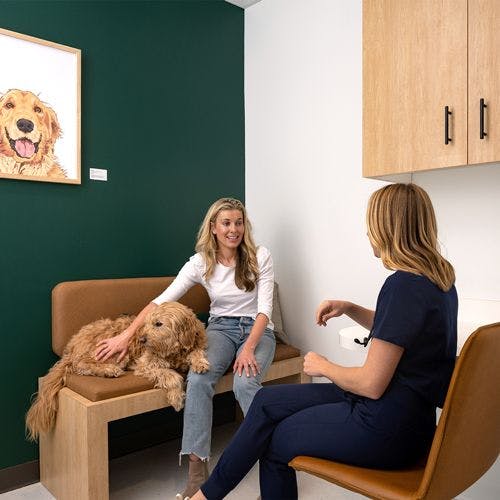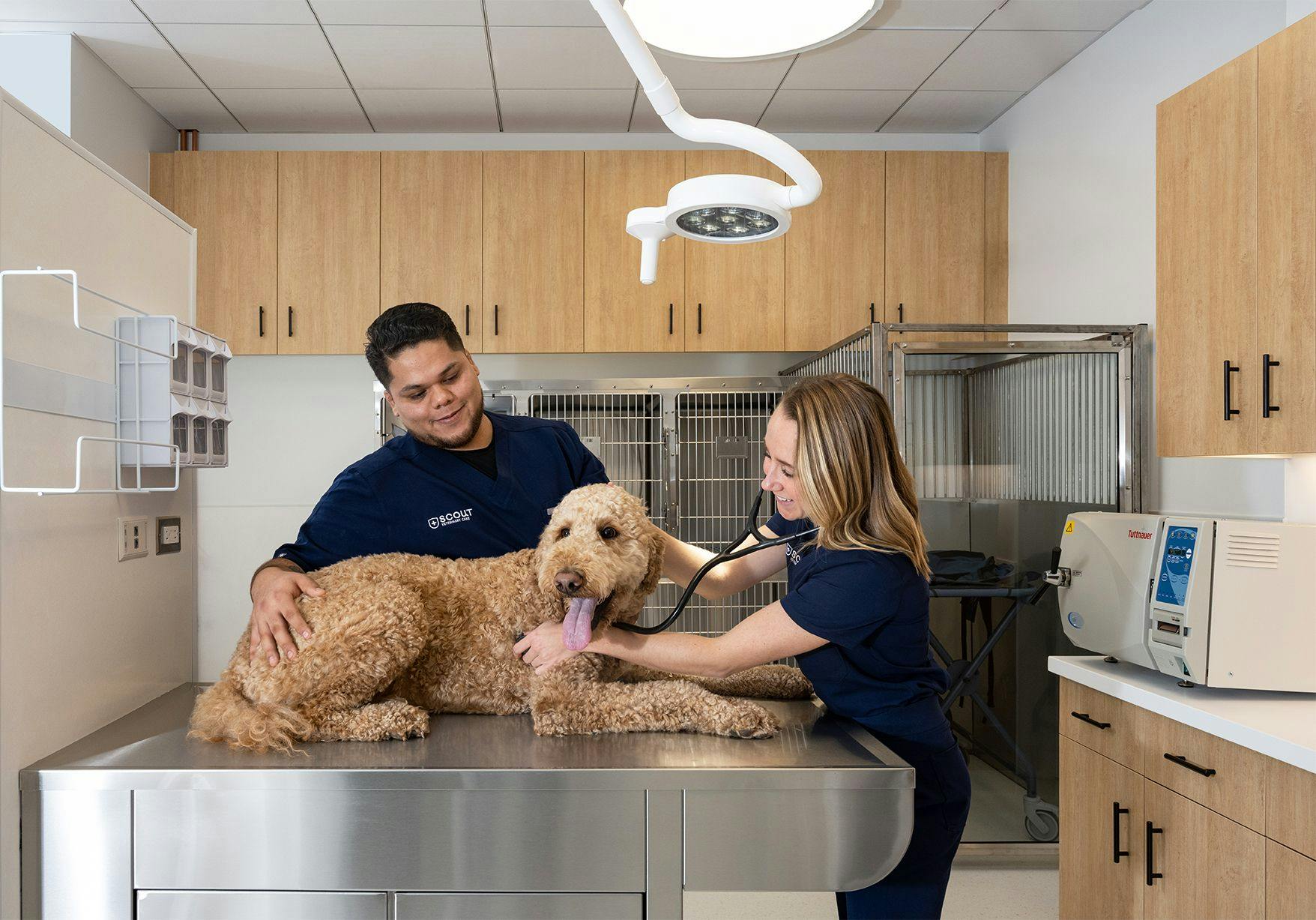We can help with...
Hotspots in Dogs and Cats


We are glad you found us! Hot spots start when a dog incessantly licks, chews or scratches a focal area of the body. They can be painful and come on quickly! Here’s how to help.
What’s going on with your pet? Common signs of a hotspot
Location:
They can be anywhere but are commonly on the trunk, base of the tail, outer thigh, neck or face.
Onset:
Quick. You will often swear that it was not there this morning. You are right! It wasn’t.
Appearance:
The area will be an area red, oozing, eroded skin with hair loss. It is often painful and/or itchy.


Here’s what you can do at home...
If your pet will tolerate you touching the area, there are several things you can do at home.
- Clip the fur (with clippers, never scissors!) around the site and cleanse the area with a mild soap and water. Pat dry but do not rub. This can help prevent further bacterial contamination and sanitize the skin.
- Place the cone of shame. That’s right. The best way to prevent it from getting worse is to keep them from doing more damage. An Elizabethan collar (cone) is one of the most effective devices to prevent licking and chewing.
- Topicals, it is tempting to put something on the area. Many hotspots can be treated with over-the-counter creams, sprays and salves. It is important to know that you can’t say that it’s a hotspot per se without an evaluation. If you decide to try something topical at home, a good rule of thumb for any topical product is to use it on a small area first and watch for any adverse reactions. And if it doesn’t work the first time, don’t keep applying it.

Does your pet need Urgent Care?
Probably. Most pets are really painful with this condition. Seeing Scout can give you peace of mind and more complete treatment options, especially if your furry friend is not willing to let you help at home!
What can you expect from your visit?
Your Scout veterinarian may recommend:
Clipping and cleaning the area. This is the first step to getting back on track.
Cytology: The team may take a sample of the skin with a scrape or cotton swab to look at under the microscope. This helps narrow down the potential causes and direct treatment
Culture: Some skin infections are complicated and the standard treatment may not work. In this case, your Scout veterinarian may recommend a bacterial culture to help tailor the treatment specifically to your pet.
Biopsy: While it’s not common, sometimes really stubborn skin issues are not diagnosed without a biopsy (sample of the skin).
Treatments: Your Scout veterinarian may recommend topical treatments, oral medications, or a combination of these to help with pain, itching, and infection.
Follow up appointments: Provided that the treatment is working, a follow-up appointment may not be necessary. However, for complicated, stubborn or difficult cases, they may recommend additional evaluations. This is typically best accomplished with your primary care veterinarian but Scout can help you out if you don’t have a vet at the moment.
Remember that you are the best advocate for your pet. If you think it’s a problem, it probably is! We are here for you in your time of need.
Next available appointment in Chicago:
Old Orchard
Lincoln Park
2369 N. Lincoln Ave. Chicago, IL 60614
773-676-8166
OPEN 7 DAYS A WEEK 10A-8P
West Loop
112 N. May St. Chicago, IL 60607
773-676-2988
OPEN 7 DAYS A WEEK 10A-8P
Wheaton
1962 S. Naperville Rd. Wheaton, Il 60189
COMING SOON
COMING SOON!
See Scout today.
Book an appointment online up to 36 hours in advance.






